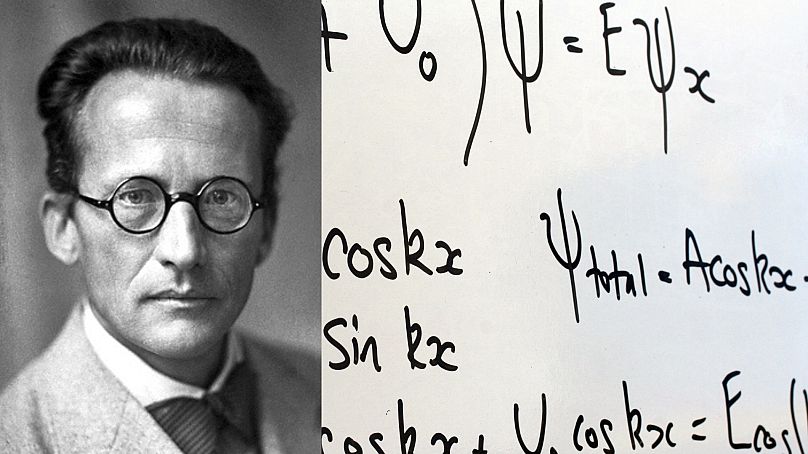Want to understand all the references in a Big Bang Theory episode, the discovery on this day in 1926 is the secret to it all.
27 January 1926: The publication of the equation misunderstood more than any other
What do endless episodes of The Big Bang Theory, Doctor Who, Futurama, and the West Wing all have in common? You might be surprised to hear that it’s using a specific physics theory as a plot device.
Whether it’s Sheldon patronising Penny about physics, the Doctor barely explaining the logic of the TARDIS or any other number of situations: TV and film characters love talking about Schrödinger’s cat.
But what exactly is Schrödinger’s cat? Well it all stems from an equation that Austrian physicist Erwin Schrödinger published on this day in 1926.
The Schrödinger equation came at a radical point in the history of physics. At the turn of the century, discoveries were made that changed a lot of the presumptions about the world. Until this point, much of physics was based off the law of motion that Isaac Newton - apple on the head guy - devised in the 17th century.
Newtonian laws of physics explained the ways objects move when force is exerted on them. Those Newtonian rules still made sense for things at a large scale, but they hadn’t held up to examination on a smaller scale.
At the beginning of the 20th century, another physicist Max Planck found that light was a quantizable. In other words, light comes in discreet packages. Albert Einstein would later call these photons.
The problem with understanding light as a single discrete object was that experiments showed light doesn’t always act predictably and go in the direction it should, like a ball pushed under the old Newtonian laws.
Schrödinger’s equations shook the principles of modern physics by never stating exactly where the light particle would go. Whereas before, physics equations typically resulted in a single answer, Schrödinger’s equation gave a derivable field for where the light particle might be.
Over the course of a few more papers published, Schrödinger established his theory and quantum physics was born. Suddenly, physicists were facing a universe that was mysterious again. New laws of physics needed to be written, and a generation of physicists including Einstein would define the creation of the world we see today.
Explaining his equation to Einstein, Schrödinger famously made the analogy of a cat in a box with a vial of poison. The vial is set to break and kill the cat at an unknown time. Until the box is opened, it is impossible to say if the cat is dead or alive. Much like Schrödinger’s equation and his cat, we are in the dark about the nature until we directly experience it.
Quantum physics has gone on to influence the creation of electronic devices from MRI scanners to USB drives. It also influenced a century of science fiction, from the space travel scenes in Interstellar, to the ground-breaking drama Pi.
In recent years, Erwin Schrödinger's legacy has been tainted by comprehensive proof that he sexually abused young girls. The theory is still a landmark one, but once again old guys in the past turn about the be wrong'uns.



















